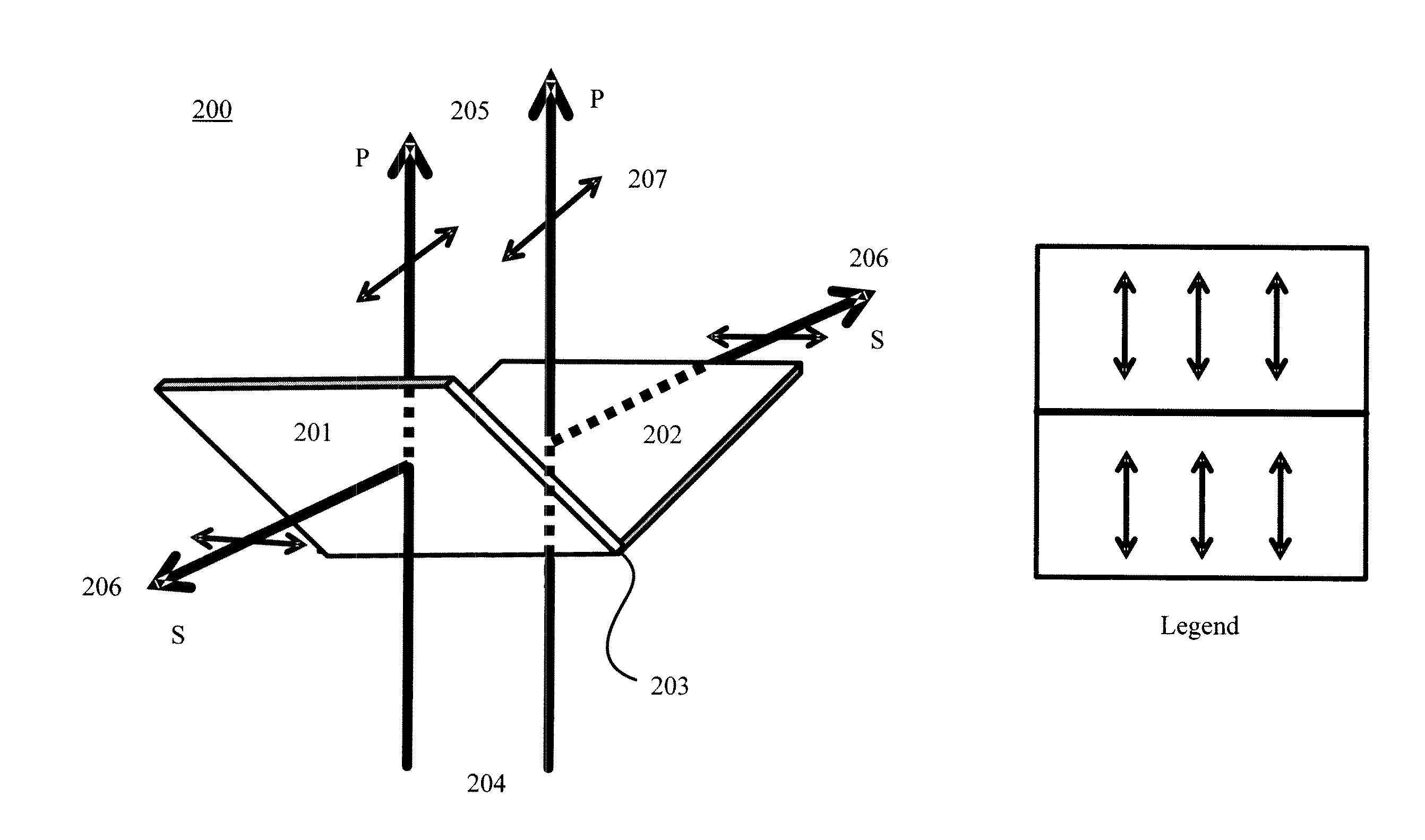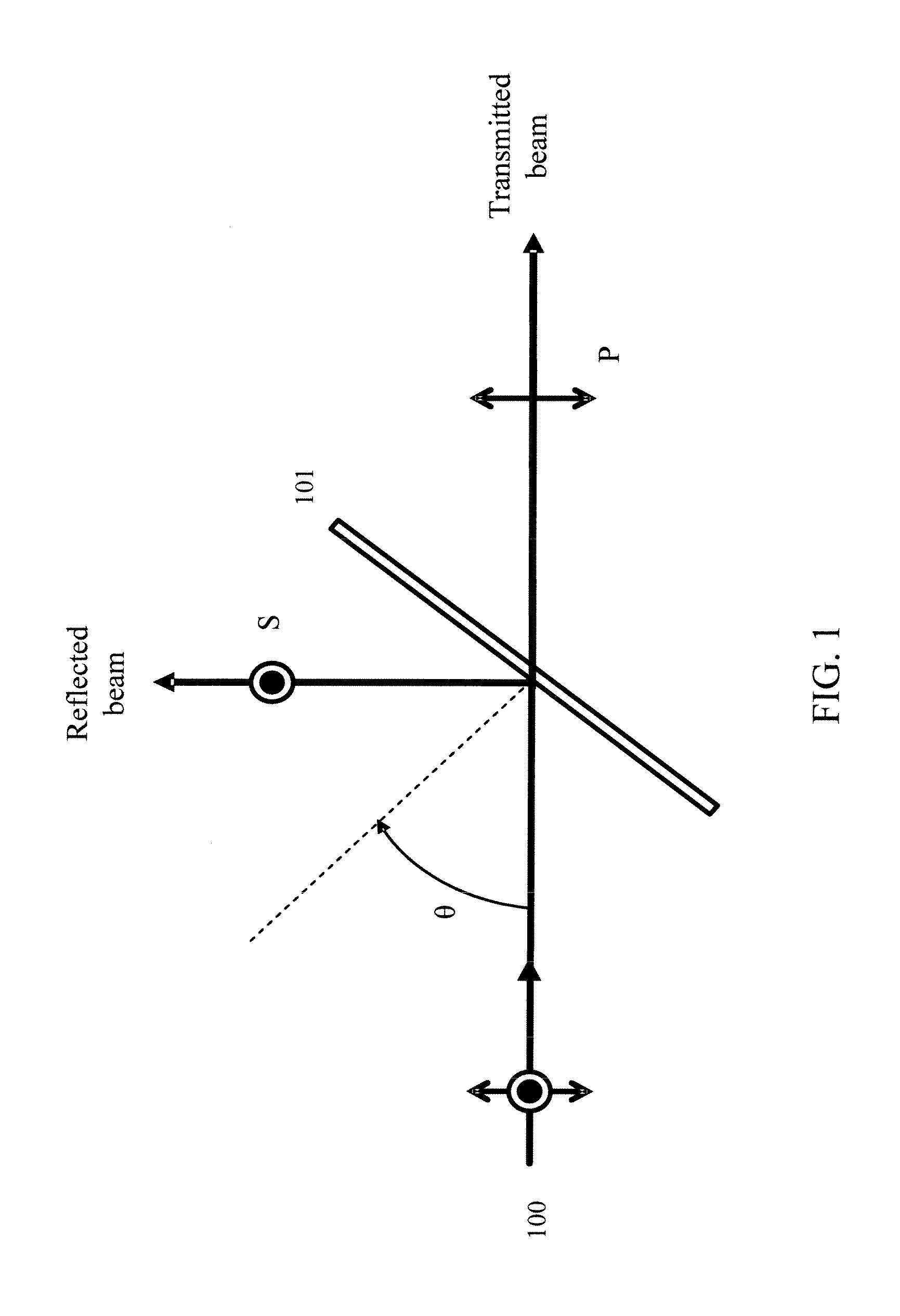Composite Polarizer With Adjustable Polarization Angles
a polarizing angle and composite technology, applied in the field of composite polarizers, can solve the problems of complex and bulky, linear polarizing cubes cannot achieve a maximum signal to noise ratio (snr), and are less efficient than reflective polarizers
- Summary
- Abstract
- Description
- Claims
- Application Information
AI Technical Summary
Benefits of technology
Problems solved by technology
Method used
Image
Examples
Embodiment Construction
[0030]Polarized light detection can significantly improve defect sensitivity for both pattern and bare (un-pattern) wafer inspection tools. For example, a state of the art polarization mask for bare wafer inspection has been demonstrated to shown signal to noise improvement of over 20×.
[0031]Referring to FIG. 1, a plane of incidence refers to a plane formed by a propagation direction of the incident light beam 100 and a surface normal of a thin film plate polarizer 101. The incident angle θ is angle between incoming light beam and surface normal of the plate polarizer 101. Typically, the polarization of the incident beam can be decomposed into two perpendicular components namely P and S, wherein P polarization is parallel to the plane of incidence and S polarization is perpendicular to that plane. S polarization component of the incident beam is reflected and P component is transmitted by the plate polarizer.
[0032]Generally, in a wafer inspection system using directional oblique ill...
PUM
| Property | Measurement | Unit |
|---|---|---|
| incident angle | aaaaa | aaaaa |
| pitch angle | aaaaa | aaaaa |
| pitch angle | aaaaa | aaaaa |
Abstract
Description
Claims
Application Information
 Login to View More
Login to View More - R&D
- Intellectual Property
- Life Sciences
- Materials
- Tech Scout
- Unparalleled Data Quality
- Higher Quality Content
- 60% Fewer Hallucinations
Browse by: Latest US Patents, China's latest patents, Technical Efficacy Thesaurus, Application Domain, Technology Topic, Popular Technical Reports.
© 2025 PatSnap. All rights reserved.Legal|Privacy policy|Modern Slavery Act Transparency Statement|Sitemap|About US| Contact US: help@patsnap.com



